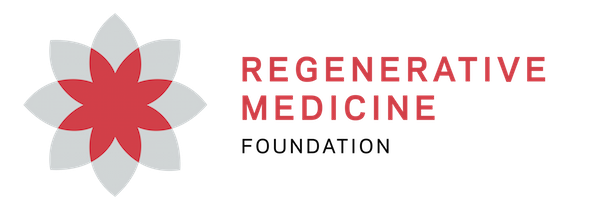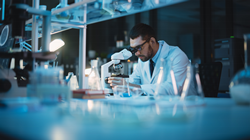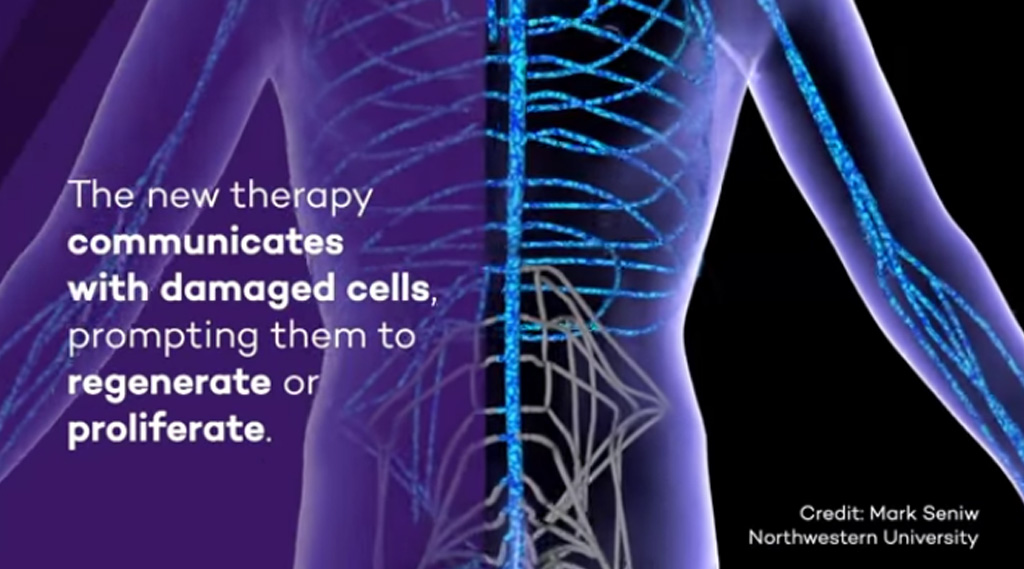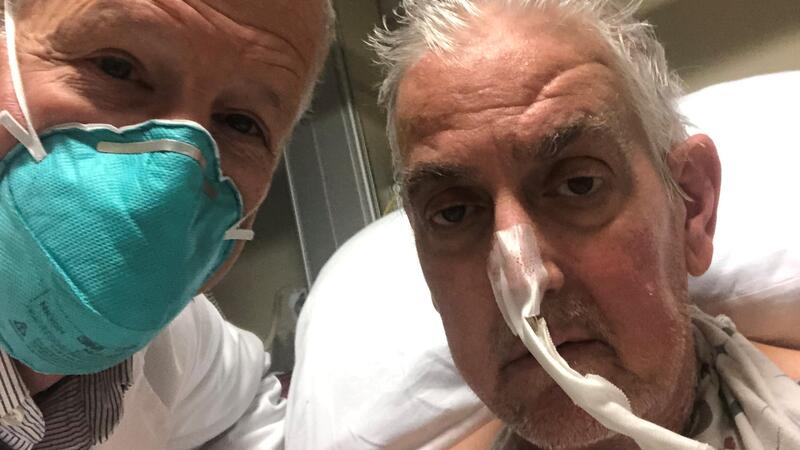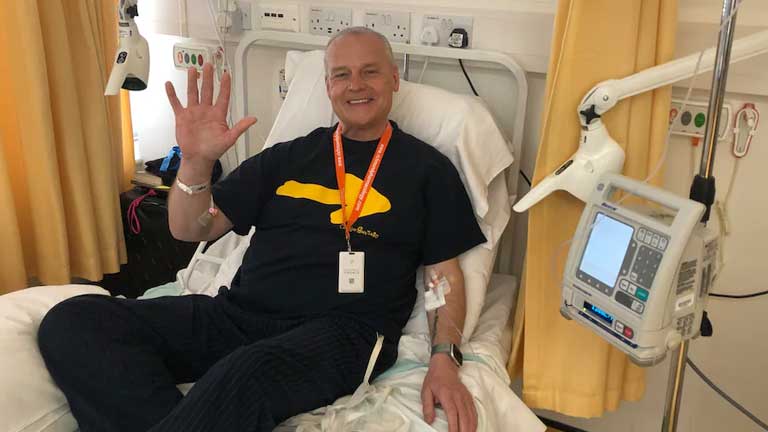ALACHUA, Fla. (PRWEB)April 21, 2021 – Cardiovascular disease kills more than 650,000 Americans annually.(1) Those who survive myocardial infarction remain at risk of death because the human heart has a very limited ability to repair itself. No one has yet found a method that leads to cardiovascular regeneration for a damaged human heart. But all that may change thanks to a revolutionary medical paper written by Dr. Ian White, President and CSO of Neobiosis, a company that focuses on the science of regenerative medicine. View original article here
A groundbreaking study from Neobiosis, a global expert in regenerative medicine, explains how a never-before-described process may open the door to regenerating damaged hearts. A peer-reviewed research paper from Dr. Ian White published in the journal Stem Cells and Regenerative Medicine explains how his studies of mouse hearts could be used to defeat a disease that kills 650,000 Americans each year.
“We took a neonatal heart from a baby mouse and studied it in a petri dish,” White said. “We studied it under a controlled environment and designed a method to keep the heart alive and keep the regenerative process active long enough to study the biology behind it.” This work is unprecedented as it has not been possible, until now, for scientists to keep a whole heart alive long enough in the lab to make significant scientific discoveries about the regenerative process”.
Under normal circumstances a mouse heart, as with most mammals, has a very short window right after birth (1-7 days) where it retains primordial regenerative abilities. But White’s new method, which keeps a neonatal mouse heart alive and beating in a controlled environment, extends that regenerative period for up to a month. This gives scientists time to learn how different therapies or drugs can repair or regenerate the damaged organ.
Dr. Keith March, Professor of Medicine and Director of the Center for Regenerative Medicine at the University of Florida, emphasized the major clinical implications of prolonging the viability of hearts in the absence of blood flow, such as is experienced by donor hearts on the way to transplantation. “We have been excited to discover that novel biological therapies from adult stem cell secretome could markedly improve cardiac transplantation, and Dr. White’s new finding could amplify this therapeutic benefit. We would be interested in testing this concept together with Dr. White’s team”.
“This study gives us an unprecedented window on how hearts heal and how we can enhance their regeneration,” said Dr. Anthony Atala, Director of the Wake Forest Institute for Regenerative Medicine. “The insights from this work will have a major and lasting impact in the development of new therapies for patients with heart disease.”
White’s paper explains that neonatal cardiac repair is mediated by the epicardium, which is a single layer of cells that covers the heart. The cells activate in response to injury by proliferating before actively migrating to the site of damage.
“This is the first demonstration that whole, intact mammalian hearts can be cultured long-term without coagulative necrosis and that the innate regenerative mechanisms remain intact when afforded a conducive environment,” White stated in his paper.
The breakthrough has huge health implications, especially for those left with damaged hearts due to exposure to COVID-19.
Dr. White and colleagues from the Interdisciplinary Stem Cell Institute at the University of Miami Miller School of Medicine said the research can be especially useful to those stricken by COVID-19. The virus is known to cause inflammation in the heart. That poses health risks for so called “long haulers,” who have not fully recovered from COVID-19 weeks or even months after first experiencing symptoms. “The research we are doing could be a long-term solution to study the cardiovascular effects of COVID in a way we have not before,” White said.
White is eager to share his work with the world. He has called on colleagues to use the same neonatal heart preservation method for their own experiments. The sharing of this research is one example of how Neobiosis leads the way in the field of regenerative science.
“Now other scientists can use our methods to employ these technologies and use it for drug interactions and studying COVID in the heart,” White said. “The more minds on this subject the better. Others can use this tool, apply their own specialties to further the knowledge of the mechanisms of cardiac regeneration to reduce the impact of heart diseases.”
White and his fellow researchers at the University of Florida Sid Martin Innovate Biotechnology Institute believe regenerative therapy holds the promises of lasting health and wellness. Those involved with the new laboratory are confident their research, and connection to the University of Florida, will lead to new health treatments, and also encourage the FDA to take a fresh look at this revolutionary field of study.
Benefits of Regenerative Therapy
Regenerative medicine has the potential to fight disease and revolutionize healthcare. The therapies center on treatments that support the body in repairing, regenerating and restoring itself. Some of these benefits include:
- Delivering biochemical instructions and raw biomaterials to damaged tissues and organs stimulating the body’s own repair mechanisms to functionally heal previously irreparable tissues or organs.
- Modulating inflammation to facilitate recovery and tissue repair.
- Treating injuries and disease naturally without surgery and opioids.
In Other News:
A great deal of activity, study and cutting-edge research has begun since White opened a Research & Development laboratory at the UF-Sid Martin Biotech Institute earlier this year.
Recent highlights include:
- Research into a biologic solution to Dry Eye Syndrome. Neobiosis becomes the exclusive manufacturer of M2 Biologics’ “Stimuleyes” allogenic eye drops.
- Research into biologic solutions in aesthetics. Neobiosis becomes the exclusive manufacturer of LiliumTM, topical aesthetic biologicals.
- Neobiosis hired Dr. Mercedes Kweh as Director of Clinical Transition to assist with IND applications with the FDA. Kweh received her doctoral degree in Immunology and Molecular Biology from the University of Florida.
- Dr. White was named to the board of advisors at Onogen, LLC
- The opening of a new, c-GMP-compliant, ISO7 manufacturing cleanroom facility within UF’s innovate Hub in Gainesville.
- Neobiosis breaks ground on second, exclusive building containing state-of-the-art cleanrooms and labs.
- Neobiosis publishes three important peer-reviewed articles by Dr. White:
1. “Evaluation of Exosome Derivatives as Bio-Informational Reprogramming Therapy for Cancer,”(2) which emphasizes the capabilities of specific subsets of extracellular vesicles that can potentially be used for cancer therapy, principally as a source of bi informational reprogramming for malignant cells.
2. “Use of Acellular Umbilical Cord-Derived Tissues in Corneal and Ocular Surface Diseases,”(3) which supports the idea that blood-derived products, particularly UCS eye drops, are a safe and efficient option for the treatment of a wide array of ocular surface disease.
3. “Neuregulin-1, in a Conducive Milieu with Wnt/BMP/Retinoic Acid, Prolongs the Epicardial-Mediated Cardiac Regeneration Capacity of Neonatal Heart Explants.”(4) This article outlines a technique that will facilitate future studies of mammalian cardiac regeneration and may be useful in cardiac-specific drug testing.
About Neobiosis
Neobiosis, LLC is a clinical-stage contract development and manufacturing organization (CDMO) run by scientists focused on the science of regenerative medicine. They produce regenerative medicines from perinatal tissues, cells and extracellular vesicles (EVs) for research and clinical trials. Regenerative medicine taps into the body’s innate ability to heal itself relieving pain without opioids, being more cost effective and safer than many surgical alternatives. Neobiosis is an FDA-registered CDMO operating under current Good Manufacturing Practice (cGMP) standards with cleanroom laboratories located in Alachua and Gainesville. Visit https://neobiosis.com/
1. Webb, Sherrie R. “AHA 2019 Heart Disease and Stroke Statistics”; 19, FEB, 2019; American College of Cardiology; acc.org/latest-in-cardiology/ten-points-to-remember/2019/02/15/14/39/aha-2019-heart-disease-and-stroke-statistics
2. Gonzalez MJ, Kweh MF, Biava PM, Olalde J, Toro AP, Goldschmidt-Clermont PJ, White IA. Evaluation of exosome derivatives as bio-informational reprogramming therapy for cancer. J Trans.l Med. 2021 Mar 9;19(1):103. doi: 10.1186/s12967-021-02768-8.
3. Tovar AA, White IA, Sabater AL. Use of Acellular Umbilical Cord-Derived Tissues in Corneal and Ocular Surface Diseases. Medicines. 2021;8(2):12.
4. Arora H, Lavin AC, Balkan W, Hare JM, White IA. Neuregulin-1, in a Conducive Milieu with Wnt/BMP/Retinoic Acid, Prolongs the Epicardial-Mediated Cardiac Regeneration Capacity of Neonatal Heart Explants. J Stem Cells Regen. Med. 2021 Mar. [Epub ahead of print]
